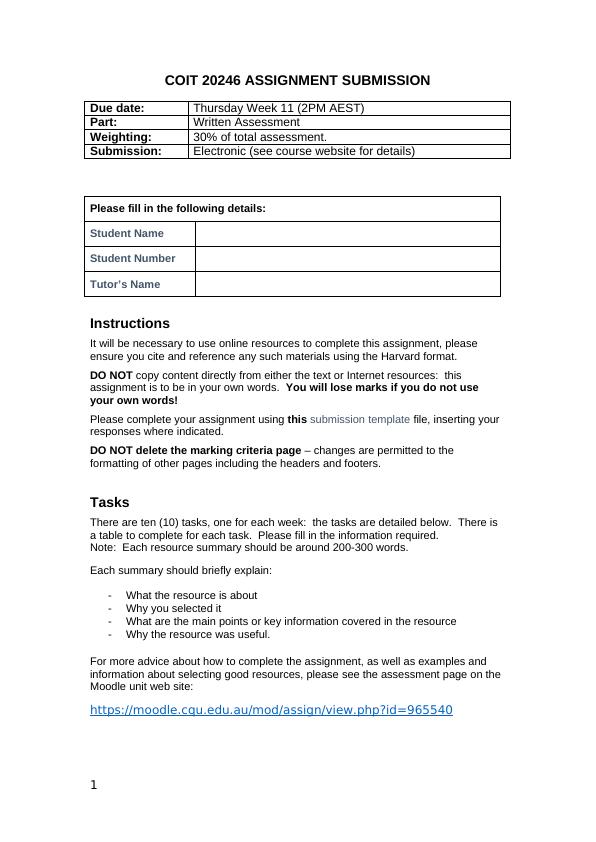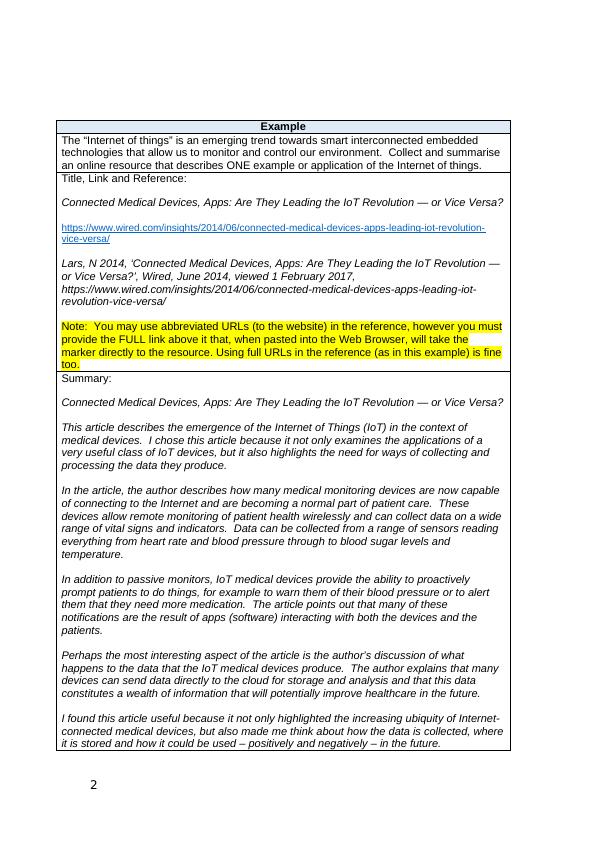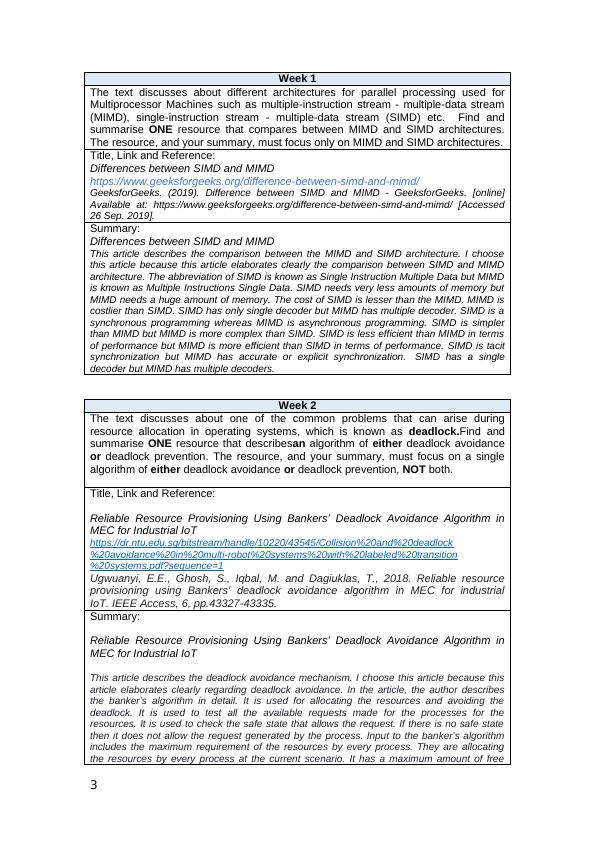COIT Submission Assignment 2022.
Please fill in the following details: Student Name Student Number Tutor’s Name Instructions It will be necessary to use online resources to complete this assignment, please ensure you cite and reference any such materials using the Harvard format. DO NOT copy content directly from either the text or Internet resources: this assignment is to be in your own words. You will lose marks if you do not use your own words! Please complete your assignment using this submission template file, inserting your responses where indicated. DO NOT delete the marking criteria page – changes are permitted to the formatting of other pages including the headers and footers. Tasks There are ten (10) tasks, one for each week: the tasks are detailed below. There is a table to complete for each task. Please fill in the information required. Note: Each resource summary should be around 200-300 words. Each summary should briefly explain: What the resource is about Why you selected it What are the main points or key information covered in the resource Why the
Added on 2022-10-11
COIT Submission Assignment 2022.
Please fill in the following details: Student Name Student Number Tutor’s Name Instructions It will be necessary to use online resources to complete this assignment, please ensure you cite and reference any such materials using the Harvard format. DO NOT copy content directly from either the text or Internet resources: this assignment is to be in your own words. You will lose marks if you do not use your own words! Please complete your assignment using this submission template file, inserting your responses where indicated. DO NOT delete the marking criteria page – changes are permitted to the formatting of other pages including the headers and footers. Tasks There are ten (10) tasks, one for each week: the tasks are detailed below. There is a table to complete for each task. Please fill in the information required. Note: Each resource summary should be around 200-300 words. Each summary should briefly explain: What the resource is about Why you selected it What are the main points or key information covered in the resource Why the
Added on 2022-10-11
End of preview
Want to access all the pages? Upload your documents or become a member.




